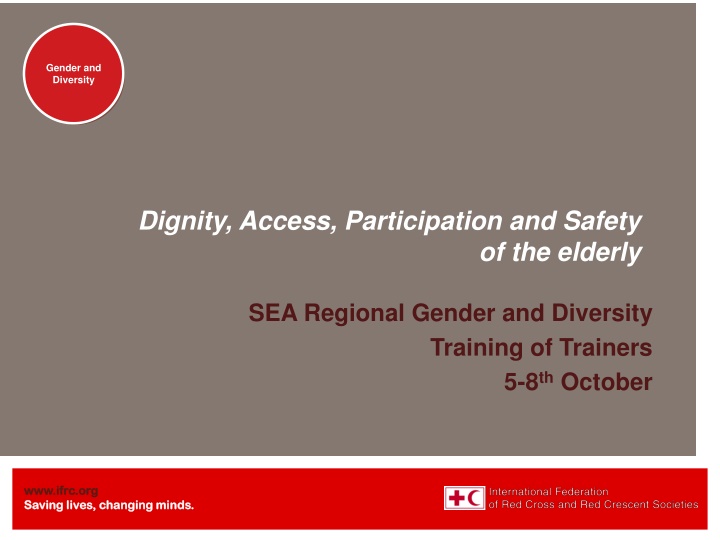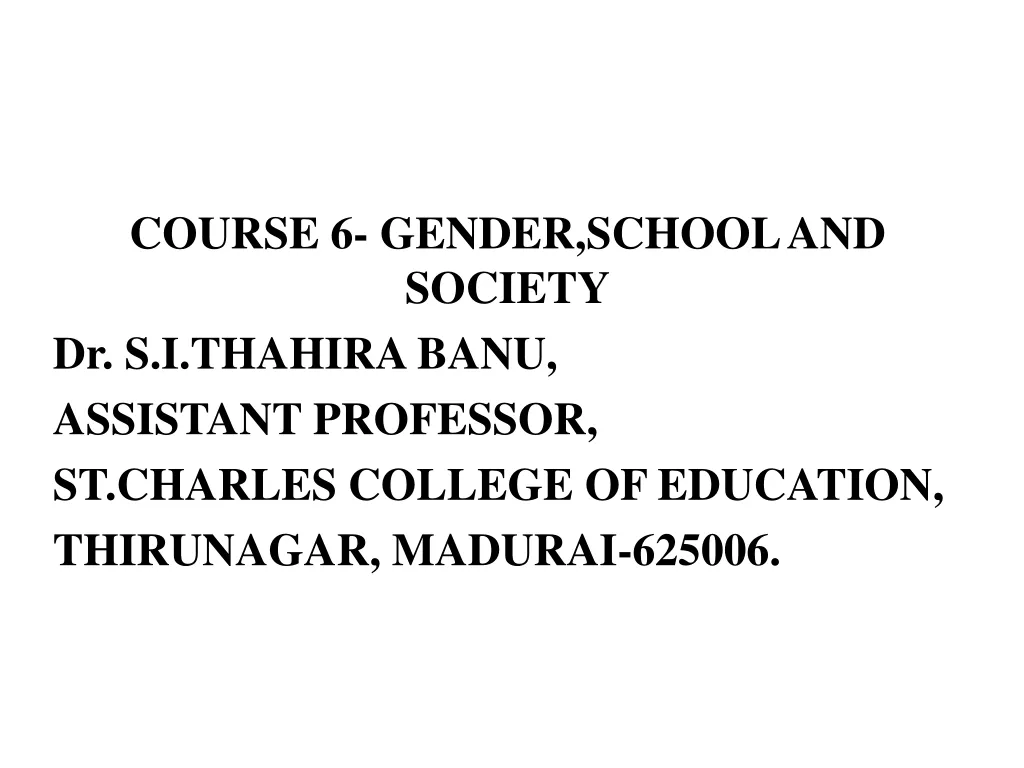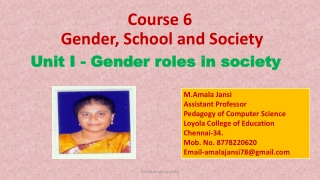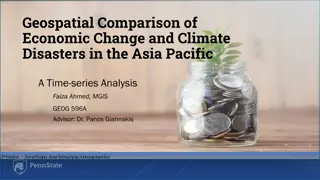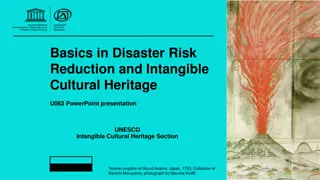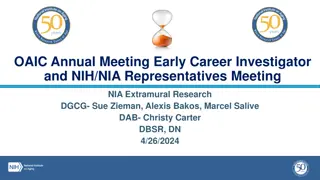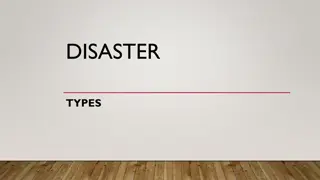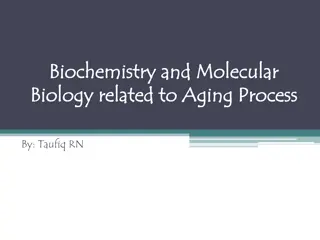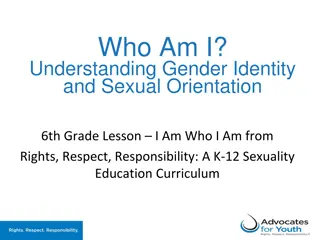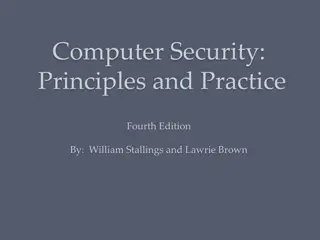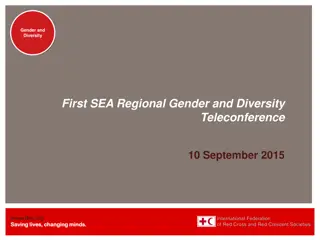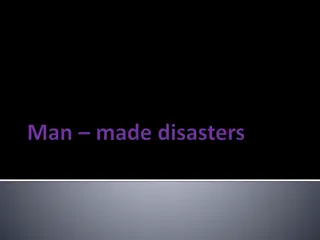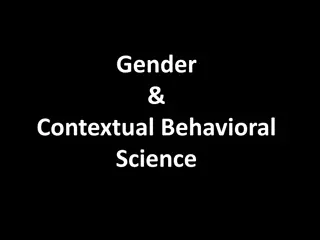Gender and Diversity in Aging Populations: Vulnerabilities and Disasters
Aging populations face heightened vulnerabilities during disasters due to factors such as health complications, lack of mobility, and dependence on assistance. The elderly, especially in rural areas, may be left alone to cope during emergencies, exacerbating their challenges. Understanding the intersection of gender and diversity is crucial in addressing the specific needs of elderly individuals in times of crises.
Uploaded on Feb 26, 2025 | 0 Views
Download Presentation

Please find below an Image/Link to download the presentation.
The content on the website is provided AS IS for your information and personal use only. It may not be sold, licensed, or shared on other websites without obtaining consent from the author.If you encounter any issues during the download, it is possible that the publisher has removed the file from their server.
You are allowed to download the files provided on this website for personal or commercial use, subject to the condition that they are used lawfully. All files are the property of their respective owners.
The content on the website is provided AS IS for your information and personal use only. It may not be sold, licensed, or shared on other websites without obtaining consent from the author.
E N D
Presentation Transcript
Gender and Gender and Diversity Diversity Dignity, Access, Participation and Safety of the elderly SEA Regional Gender and Diversity Training of Trainers 5-8th October www.ifrc.org www.ifrc.org Saving lives, changing minds. Saving lives, changing minds.
Session learning objectives Gender and Diversity (please included the results from your SMART objectives exercise) www.ifrc.org www.ifrc.org Saving lives, changing minds. Saving lives, changing minds.
Aging populations Gender and Diversity In Southeast Asia, and globally there are a number of countries that have increasing aging populations. We know that disasters impact people in different ways and they will have different needs during and after an emergency. The elderly are one of the most vulnerable groups in disasters. www.ifrc.org www.ifrc.org Saving lives, changing minds. Saving lives, changing minds.
Aging inequalities during disasters Gender and Diversity In the Japan earthquake and tsunami 2011 65% of casualties were over 60 years of age As a result of the tsunami in Aceh, Indonesia 33.6% of victims were elderly (70+). www.ifrc.org www.ifrc.org Saving lives, changing minds. Saving lives, changing minds.
Vulnerability factors of the elderly during disasters Gender and Diversity There are a number of factors that increase the vulnerability of the elderly to disasters: Older people get weaker and slower and are more likely to have complications with their health Older people may lack mobility, hearing, sight and are therefore would be more dependent on assistance Elderly people with disabilities, can be even more prone to vulnerabilities (this highlights another interaction between aspects of diversity) www.ifrc.org www.ifrc.org Saving lives, changing minds. Saving lives, changing minds.
Vulnerability factors of the elderly during disasters Gender and Diversity In rural areas, elderly members of the household may stay alone, while younger family members migrate to cities for work. If a disaster strikes they may have to cope on their own and may have young members of the family to look after in addition to themselves. www.ifrc.org www.ifrc.org Saving lives, changing minds. Saving lives, changing minds.
Capacities of the elderly during disasters Gender and Diversity Resourcefulness due to years of experience Many may have lived through disasters before and understand the pattern of disasters Experience of building up effective coping strategies or survival systems during and after disasters www.ifrc.org www.ifrc.org Saving lives, changing minds. Saving lives, changing minds.
Capacities of the elderly during disasters Gender and Diversity Knowledge of traditional or alternative medicines, which can be vital to the development of the community In some communities the elderly may have control over household assets and therefore play a key role in building back livelihoods Elderly members of the community may be the main decision makers www.ifrc.org www.ifrc.org Saving lives, changing minds. Saving lives, changing minds.
What can we do? Gender and Diversity Before a disaster, include the elderly in all disaster preparedness and disaster risk reduction activities e.g. mapping, analysis, planning, implementation and reporting Encourage staff and volunteers to view older people in the community as having capacities and develop processes to harness and build on these capacities After a disaster, ensure elderly people can access evacuation centers and that they can attend relief distribution points. It is important to make provisions to reduce barriers to this. www.ifrc.org www.ifrc.org Saving lives, changing minds. Saving lives, changing minds.
What can we do? Gender and Diversity Understand the profile of the community to see whether elderly people are living alone or are looking after young children Engage the elderly in recovery livelihoods programming. Adapt the programme to ensure their participation in order to further build their resilience Ensure any data collected is disaggregated by age and if possible takes into account different elderly age brackets e.g. 60-69; 70-79; 80-89) www.ifrc.org www.ifrc.org Saving lives, changing minds. Saving lives, changing minds.
Conclusion Gender and Diversity Please add your own groups conclusion www.ifrc.org www.ifrc.org Saving lives, changing minds. Saving lives, changing minds.
Gender and Diversity for Resilience Resource Library Gender and Diversity For internal and external resources on inclusion of the elderly in DRR/DM follow this link: Link: https://sites.google.com/site/ drrtoolsinsoutheastasia/gende r-and-diversity/gender-and- diversity-for-resilience- toolkit/building- resilience/disaster-risk- reduction-drr---disaster- management-dm www.ifrc.org www.ifrc.org Saving lives, changing minds. Saving lives, changing minds.
Gender and Diversity Any questions? www.ifrc.org www.ifrc.org Saving lives, changing minds. Saving lives, changing minds.
FOR FURTHER INFORMATION ON GENDER AND DIVERSITY PLEASE CONTACT: IFRC GENDER AND DIVERSITY OFFICER, SOUTH EAST ASIA REGIONAL DELEGATION CHRISTINAHANEEF (christina.haneef@ifrc.org) THIS PRESENTATION IS PUBLISHED BY INTERNATIONAL FEDERATION OF RED CROSS AND RED CRESCENT SOCIETIES P.O. BOX 372 CH-1211 GENEVA 19 SWITZERLAND TEL.: +41 22 730 42 22 FAX.: +41 22 733 03 95
